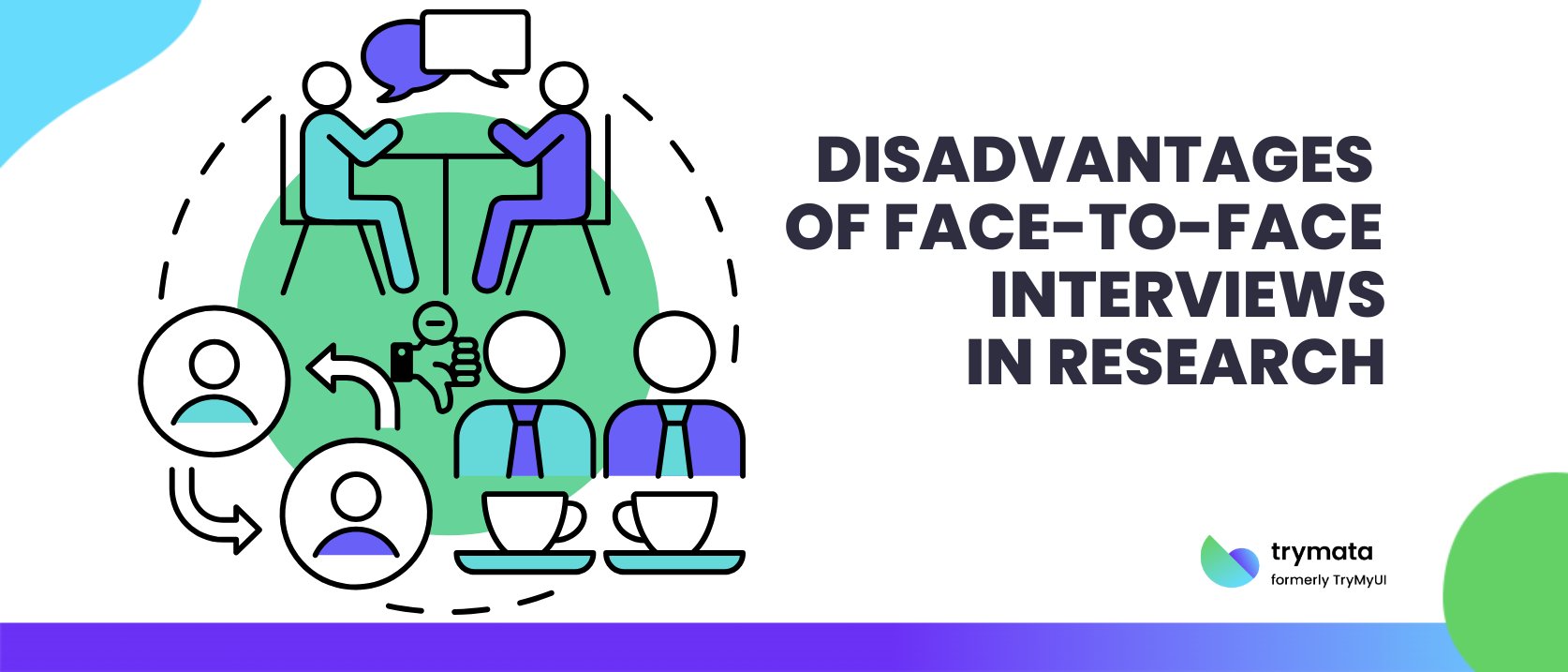Face-to-face interviews have been a staple of qualitative research for years, especially when exploring human behaviour, motivations, and decision-making. They have many advantages, such as body language, facial expressions, and personal interaction, but they’re not without challenges.
As market research and data collection methods evolve, we need to weigh up the pros and cons of this traditional method, especially when considering alternative methods like online surveys, chat interviews, or mobile surveys.
In this blog, we’ll look at the disadvantages of face-to-face interviews and why researchers often use other data collection methods when time, cost, and flexibility become critical in a project.
1. Time Consuming and Logistically Challenging
One big drawback of face interviews is how time-consuming they are. Between scheduling, setting up a location, and conducting the interview, you’re looking at a lot of time per participant. Compare that to online and mobile surveys or even chat interviews, where you can collect data at scale without the need to travel or be physically present.
The data collection process in face-to-face formats also requires a longer recruitment process, especially when dealing with sensitive topics or trying to reach specific segments of your target audience.
2. High Cost and Increased Expenses
One of the most obvious drawbacks of face-to-face interviewing is cost. There are travel expenses, venue rentals, and the interviewer’s time. If you’re researching multiple locations, these expenses add up fast.
Compare that to phone interviews, video interviews, or online surveys, where most (if not all) of the infrastructure is already in place. No need for flights, hotel stays, or meal stipends. Mobile surveys and email interviews can be done at a fraction of the cost, and no credit card is required to get started.
3. Limited Reach and Scalability
While face-to-face interviews are great for qualitative data, they fall short when your research project requires volume. Interviewing 10 people in person takes much more time and effort than sending out a survey or doing a video call.
This limited reach can affect your ability to probe deeper across a broader population. It also slows down the analysis process as you have fewer data sources than more scalable data collection methods.
4. Interviewer Bias and Participant Discomfort
In a face-to-face interview, the interviewer’s biases, even unconscious ones, can affect the direction of the conversation or how interview questions are framed. The natural ability of the interviewer to remain neutral plays a big role in maintaining data quality. Also, participants might feel pressured in a face-to-face setting.
They may give answers they think are expected or avoid controversial responses because of the presence of another person. This can impact input responses and limit the authenticity of the data collected.
In contrast, instant messaging interviews or online surveys provide a more relaxed environment where participants feel safe to share honestly.
5. Harder to Reach Certain Demographics
Depending on your research topics, in-person interviews can exclude people due to geography, disability, or time constraints. People who are busy answering emails all day or working long shifts may not have time to meet in person. This skews your sample and can compromise the screening process.
Online and mobile surveys, chat interviews, and alternative methods like video interviews make it easier to include a diverse group, improving the inclusivity of your qualitative research.
6. Legal and Ethical Considerations
When it comes to qualitative data collection, ensuring informed consent is always important, but face-to-face settings can sometimes blur the lines. Participants might feel pressured to agree or may not fully understand the terms of participation, especially if visual aids aren’t used to explain the process clearly.
In contrast, email interviews or chat interviews can include consent forms that participants must acknowledge before proceeding, giving decision makers a better way to track and manage ethical compliance.
When to Use Other Interview Methods in Usability Testing
While there are pros and cons to everything, here’s when you might want to skip in-person interviews:
- You’re testing a global product with users in multiple time zones
- You need to get data fast and cheap
- You’re testing topics that might cause performance anxiety or discomfort
- You want to avoid your own biases during the interview process
- Your budget doesn’t allow for high-cost in-person testing
Instead, try:
- Video interviews to keep facial feedback
- Online surveys for quick usability sentiment checks
- Chat interviews for lightweight feedback
- Focus groups via video for group discussions
- Mobile surveys for testing mobile experiences on participants’ devices
Conclusion
In summary, face-to-face interviews give you in-depth human insight but come with cost, time, logistical headaches, and bias. Other interview methods like online surveys, video interviews, or chat interviews are more efficient and scalable.
Choosing the correct data collection method depends on your goals, the type of qualitative data you need, and your audience.
Whether you’re analysing input responses from a video call, designing a quick mobile survey, or answering emails from respondents, the best approach is the one that gives you valuable insights with efficiency, accuracy, and respect for participants.




